This year marks the anniversary of the most popular selling home computer ever, the Commodore 64, which made its debut in 1982. Note that I am saying “home computer” and not personal computer (PC) because back then the term PC was not yet in use for home computer users.
Some of you have probably not heard of Commodore, which is kind of sad, though there is a simple reason why — Commodore is no longer around to maintain its legacy. If one were to watch a documentary about the 1980s they may see a picture of an Apple computer or its founders but most likely would not see a picture of a Commodore computer in spite of selling tens of millions of units.
To understand the success of the C64 I would first back up and talk about the fabled era of home computers which starts with understanding the microprocessor of the day, the venerable 6502. Check out the video and follow along below.
The 6502
The 6502 was the brainchild of Chuck Peddle and a team of engineers, Bill Mensch, Wil Mathes and others, who were all working at Motorola — we called them the Motorla Five even though there were seven of them. Chuck’s team successfully shrunk down a full sized PCB known as the main processor board onto a single chip, known now as a microprocessor, the 6800 to be exact. While this evolutionary step seems whole and natural to someone like you or I, the existence of the microprocessor was deemed a threat to those at Motorola who made their money selling the main processor board for tens of thousands dollars vs the $250 that the 6800 was slated to sell for. Mr. Peddle basically received a “cease and desist” letter from Motorola to stop work on the 6800 which Chuck took to mean that they were abandoning the project and the intellectual property it represented. Chuck and company then joined MOS Technology in Norristown PA and subsequently released the 6502 microprocessor which sold initially for $25 and ultimately less than a dollar. The fact that the lawyers disagreed with Chuck is a different story.
KIM-1
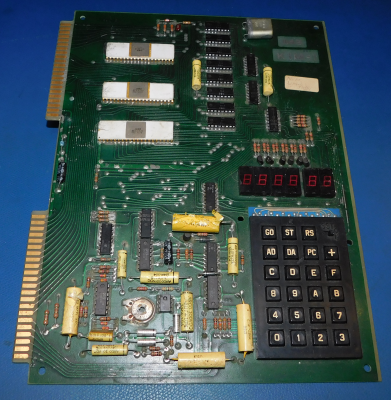
The 6502 is at the heart of many of the home computers of the era starting with Atari, Apple, BBC Micro, and of course Commodore. One of the earliest examples of the 6502 was a system known as KIM-1. Contrary to popular belief, the KIM-1 was not designed by Chuck Peddle but rather someone from the Calculator Group at MOS lead by John May. When asked about his contribution to computers in general, Mr. Peddle’s response was that he was proud of the Input/Output (I/O) chips of the day as a computer with no I/O is just a processor but add I/O and you have terminals, cash registers, printers, etc.
I cut my teeth on the 6502 as a young bench technician at a company named Pennsylvania Scale Company in the late 70’s, doing processor controlled instrumentation which was pretty much a burgeoning field at the time. Turns out I had an affinity for how microprocessors “thought” and had worked my way up to the title of Hardware Design Engineer by the time I applied for a job at Commodore, fair to say that I would not have had my career in electronics without the existence of the 6502.
Sometime during this time Commodore, under the reins of its founder Jack Tramiel, purchased MOS technologies and became a computer company that owned a chip fabrication plant known as a chip fab for short. Though the purchase of the chip fab was initially instituted with an eye on the calculator market, Commodore found itself in the position of being a computer company that could make its own (custom) IC’s, or chips. This would change how home computers were designed in the days to come.
PET
Chuck’s next endeavor centered around the line of computers known collectively as PET. Chuck had told me what PET stood for in his mind, but I have since forgotten which of the several interpretations is correct. PET computers had a built in keyboard and monitor which was important back then as usable monitors were somewhat rare. The PET found a home in business, academia and industrial usage and so was something of a predecessor to the “home computer” in my book.
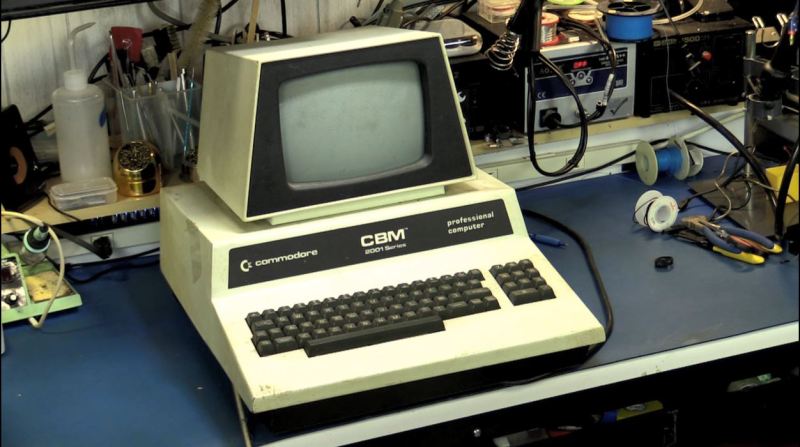
The VIC Chip
Meanwhile a chip designer known mostly for designing Read Only Memory (ROM) named Albert Charpentier made it his goal to design a new video interface chip, the chip that made computers exciting due to the colors and motion that could be created. To prove the chip was doable in a very 1970’s fashion, Albert designed a PCB to prototype the new video controller IC, a chip that was to become known as the VIC-1 chip. This chip was designed specifically to integrate with the 6502 processor and was tightly integrated with the address/data busses and control signals The story goes that it was 11:00 at night when suddenly the color display started working and the VIC chip’s legacy started.
VIC-20
At one point a system was built around the VIC chip in order to show off the chip’s capabilities, a system designed by Charpentier and a young chip designer named Bob Yannes who went on to design the popular SID chip — more on that later. Talk then turned to selling that system as a new computer product. A relatively young programmer named Bob Russell is credited with convincing the boss, Jack Tramiel, that if Commodore was going to sell a computer based on the VIC chip that it should be a “real” computer and the project was transferred to Chuck Peddle’s group who had the experience of designing and producing the PET. Ultimately this computer became known as the VIC-20 and was designed by an engineer named Bill Seiler, with the software code being written by John Feagans and Bob Russell.
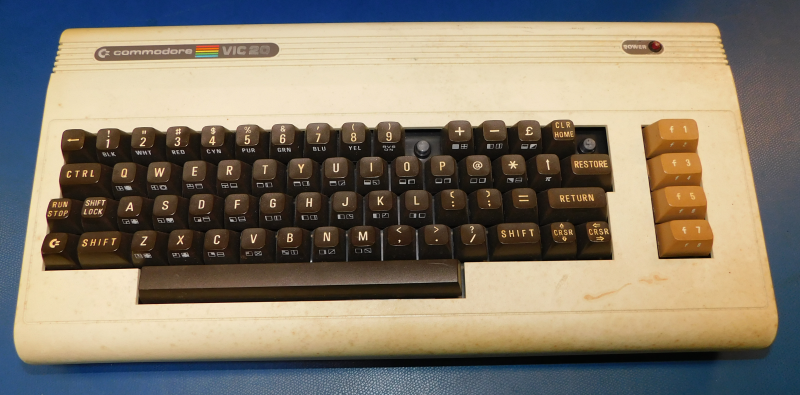
The VIC-20 was Commodore’s “TI Killer” as it targeted the same space that the Texas Instruments TI-99 computer system was selling into. The VIC-20 had 4 – 5 kB of Random Access memory, 16 kB of ROM and built in sound in the form of three sound generators in the VIC chip.
It was during this time that Commodore started to exercise its overseas manufacturing capabilities which would later set it apart from other home computer companies.
Next, Albert Charpentier set his sights on a new version of the VIC chip, this time with the inclusion of Movable Object Blocks known in the industry as “sprites”. These are predefined blocks of graphics that can be moved around by simply changing pointers as opposed to continuously using the processor to move the object around the screen. The sprites were also capable of letting the processor know when they collided with each other, an important aspect when gaming, freeing up the processor even more.
Behind the scenes, Albert had taught the VIC chip to share the main memory bus with the 6502 processor in a way so as to make use of an unused window in time to get most of the graphics done: it “shared” the memory bus in a multiplexed fashion. The decision to do multiplexing was brilliant in my humble opinion, and would go on to be a feature of most all of the Commodore computers to follow to include the Amiga line of computers.
SID and the C64
The SID chip included features such as envelope generators, oscillators, and filters, all components of the musical synthesizers of the day.
Much like the VIC-20 before it, these amazing chips were combined into a demo and shown to Jack Tramiel, and the decision was made to produce the Commodore C64. The C64 is listed in the Guinness Book or World Records as the most popular home computer ever sold at 27 million units. In the time since, there has been some analysis of serial numbers that suggest that fewer units were sold in actuality, but there is little doubt that it far outsold the competition.
The C64 became Commodore’s “Apple Killer” as it was targeted at the market shared with the Apple II. The price of the C64 started out at $595 USD, lowered to $299 and finally lowered to $199 at a time when the competition cost over $1,000 . During this time, Commodore’s founder Jack Tramiel stated famously that we made “computers for the masses not the classes” with emphasis on selling the hardware at a fair price which would open the door to massive software sales.
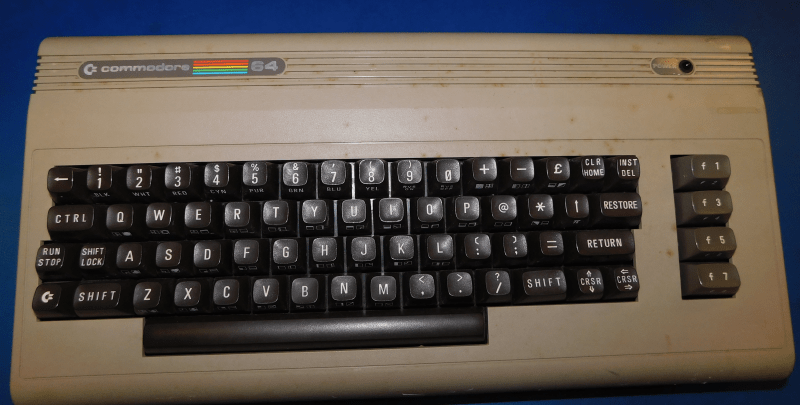
The C116
The C116 was my first introduction to the inner workings of Commodore as a young, enthusiastic design engineer employed by MOS Technologies/Commodore Business Machines. My boss Shiraz Shivji showed me the color Spectrum computer made by Timex Sinclair and said that this was what we were going after.
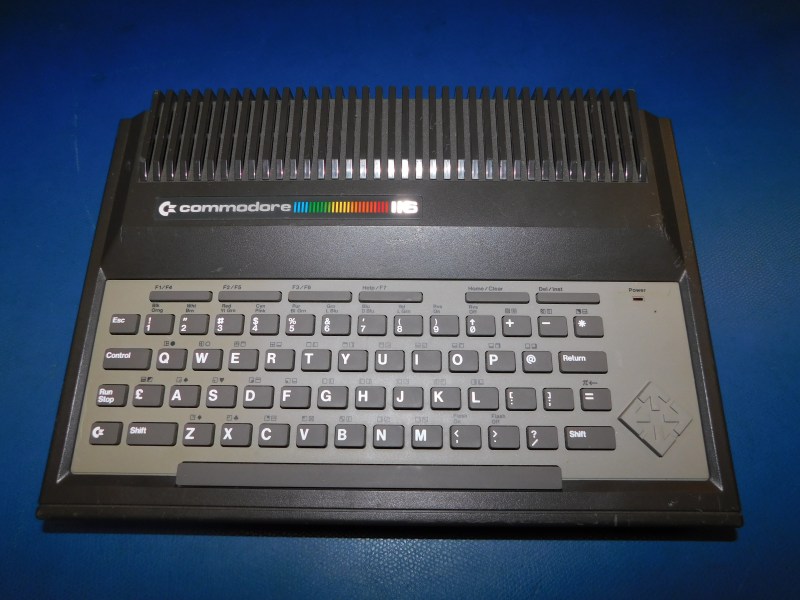
C264/C364V
Next in the family was the C264 computer, a 64 kB Byte computer with the same 121 colors and simple sound. The computer was nowhere near as interactive as the C64, as it lacked sprites and the dedicated SID sound chip, but our attitude was that someone who wanted a game machine should “buy a C64”. This was meant to be a dedicated text and static color machine for business. We developed new printers, disk drive, and monitor to round out the family. The C264 was designed to sell for $79 USD.
The last of the TED series was the C364V, where “V” stood for voice. Commodore had acquired some of the talent that made the groundbreaking TI Speak-and-Spell™. With this leg up on the voice interactive market Commodore was set to release the “Talking Magic Desk” a desktop motif that gave verbal prompts which was very aggressive for 1984.
We showed the entire suite of “TED” computers and peripherals at the 1984 CES show. Before leaving the show we started hearing rumors that Commodore’s founder, Jack Tramiel, had quit, which we sadly found out to be true.
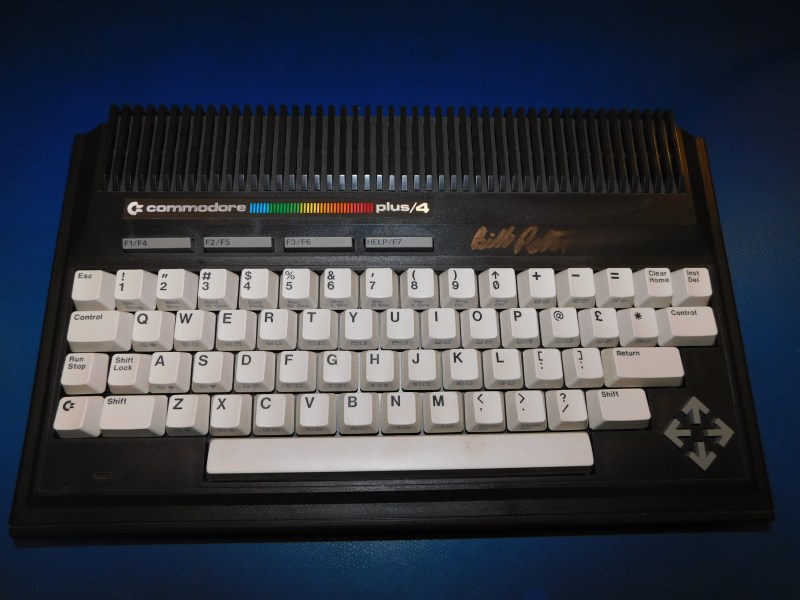
One positive aspect of the TED project was that Commodore finally built a $79 version of the computer known as the C16. We still hear from people who grew up in Europe that their first computer was a C16.
The hardware for the TED was done by myself and Dave Haynie — the design was already done when I got there — and the software was done by Fred Bowen, Terry Ryan and John Cooper as shown in the TED Easter Egg.
The Commodore LCD
As the engineering was ramping down for the TED series, we started to work seriously on our next computer, the Commodore LCD. Commodore had not been idle and had purchased a manufacturer of LCD assemblies named Eagle Pitcher, and became the only US based company that could produce. We did the initial architecture of the LCD based upon a central Memory Management Unit (MMU) as we were trying to speed up the 6502 of the day through some memory management tricks. Ultimately we turned the hardware effort over to Jeff Porter and Ian Kirschman with software being done by Hedley Davis, Andy Finkle, and Caryolyn Scheppner. The LCD system was slated to be the next evolutionary step in the Commodore product line, but sadly it was canceled by the person that replaced Jack Tramiel.
Finally, we heard that the end of the 8-bit era was upon us in the form of the 16/32 bit Amiga computer, a recent acquisition by Commodore of what was basically a bunch of ex-Atari engineers designing the next generation coin op video game that Commodore was set on turning into a business machine. There was just one problem, the Amiga wasn’t slated to be completed for at least another year.
C128
A bunch of engineers got together and decided that we could squeak a final 8 bit computer through in the time available before the Amiga would fully hit. All of us knew from experience that a computer that would require all new software was a non-starter, at least not without commitment from upper management which seemed to be missing now that Tramiel was gone.
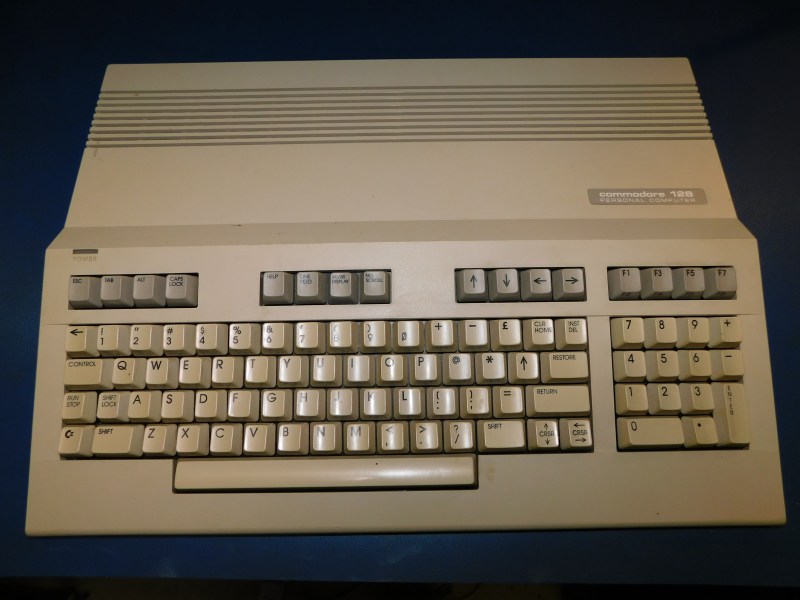
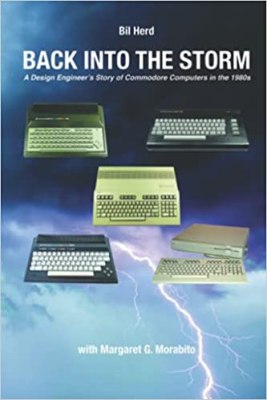
Including a C64 compatibility mode just made sense to us engineers as did the name C128 to reflect having twice the memory of the C64. (The C128 was designed to support a total of 512 kB memory but that’s a different story.) The design was mostly completed and a working example running a C64 game was shown to management which struck a chord with said management who were pining for the days of huge sales of the popular C64.
The entire story of the C128 development can be found in the book Back into the Storm: A Design Engineer’s Story of Commodore Computers in the 1980s but before it was done, we would have two microprocessors, with the addition of a Z80, as well as three operating systems and simultaneous 40 column and 80 column outputs. It was designed to sell for $199 USD but probably sold more often at $299. The hardware was done by Bil Herd, Dave Haynie, and Frank Palaia, the software was done by Fred Bowen, Terry Ryan and Von Ertwine.
Vintage Computer Festival
If you can’t get enough 8-bit computing, will be celebrating the anniversary of the C64 this year with the first installment at the Vintage Computer Festival this weekend in Wall New Jersey. Albert Charpentier will be there as well as Dave Haynie, Bob Russell, Andy Finkle, Hedley Davis, myself, and others.

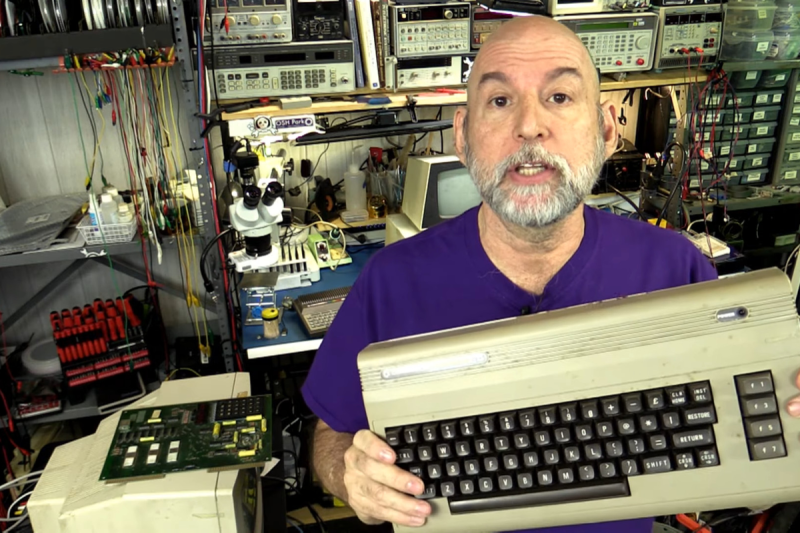
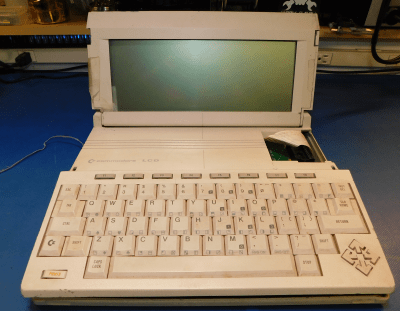
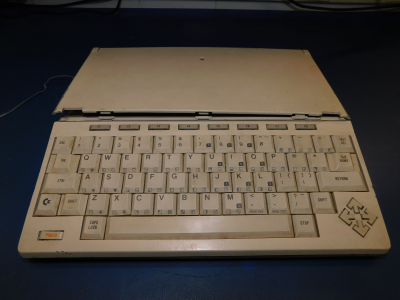














Motorola sued Chuck Peddle twice? Motorola did release the 6800. And Mos Technology released the 6500, a 6502 that was plug in compatible with the 6800. Motorola didn’t like that one bit, hence a lawsuit, and the 6502 as we know it.
6501.
Had to change to change the number to 6502 as part of the lawsuit is what I always heard.
I saw Bill Herd’s presentation at VCF 2021, and it was very interesting. I ‘grew up’ with personal computers but never got involved with any Commodore machines, though I did own an SYM-1,OSI Superboard, and an Atari 800. My school used TRS-80s & Apple ][. As an outsider looking into the Commodore ‘world’ I found it interesting, and after seeing his presentation at VCF 2021 I bought his book. I enjoyed both.
Given the chance, I’d encourage anyone even slightly interested in the topic to check out his presentation and/or book.
I briefly owned a C64 “portable” that was built a lot like the K-pro portables with a keyboard as a cover for the computer and a floppy disc drive in box. It had a 3 or 4″ color CRT screen with horrible resolution. I ended up selling it to a sailor who was going to start submarine duty and wanted something to play with on the sub.
Prior to that I had a VIC-20 and I added a Votrax speech synthesizer board that I haywired together. That was fun! I don’t remember what happened to it.
That, my friend, was the venerable Commodore SX-64. It is a C64 in a luggable case: https://en.wikipedia.org/wiki/Commodore_SX-64
Never had one myself but aside from the low res screen the default color scheme is much more visable due to the higher contrast colors. You can do a ROM mod to get those colors on a standard C64.
Surprised they let the SX-64 aboard, given they could probably store food for a whole week in the space it uses.
One of my coworkers had one. I already had a C-64. I wanted a Plus/4 until I found out they were not C-64 compatible.
I think I was also under that delusion at some point in the 80s, thinking a plus 4 was an upgrade over a C64 and having it high on the wish list… until I wised up… and the C-128 got on my radar…. then that only lasted until A500s turned up in stores…
My elementary school homeroom got two Vic-20s, the only classroom computers in the school. I cut my teeth on them and wanted to upgrade to C64 when I could get one for home, but the store was out of it and I regretfully settled on the Vic-20 without being patient for the C64 to be back in stock. Still got a lot out of the Vic-20, programming many games on it from mags, buying many cartridges, sharing with friends, etc. Sadly, it was sold as part of a house sale when I was in college. I got a C64 with monitor and games for free not too long ago, but have not turned it on yet.
Ditto… but my VIC-20 was killed by a Sea Monkey aquarium toppling from the shelf above and dumping the colony straight into the keyboard. Never got to play Gorf or Radar Rat Race again as a youngster… or more Sea Monkeys.
I was an Atari guy back then and I’d go to the mall and all the department stores back then sold computers and they would have some running demos and stuff. I would go to the commie64 and do peek and pokes on them and turn off the sound or video then tell the sales people they were broken, that would always drive them nuts.
LOL! I remember when Target was selling C64 stuff hard core and one time this kid went and typed, “Commdore Sucks” and then ran off to get his mommie or friend or whatever. My brother slipped in and did a basic program to rapidly cycle the screen and border colors while printing, “Commodore Rules!!!” over and over. The kid came back, looked on with his compadre in horror, turned it off and scampered away. Good times!
I was an atari kid too, didn’t hear about the Commodore 64 until I was in High School
Ha, same. I was an Atari guy, and ended up getting my first job in a software store at 15. I took every opportunity to extol the merits of the Atari over Apple and Commodore.
“When asked about his contribution to computers in general, Mr. Peddle’s response was that he was proud of the Input/Output (I/O) chips of the day as a computer with no I/O is just a processor but add I/O and you have terminals, cash registers, printers, etc.”
That’s why the Z-80 had 256 I/O ports! 6502? Boo!
The Z80 does not have built in I/O ports. :)
The Z80 and 8080 had the same sort of I/O that the 6502 had, ie none. But theformer had a space for I/O separate from addressspace, whike the 6502 had to use address spacefor I/O.
You still needed external electronics to latch or buffer signals coming or leaving the CPU.
The 8080, and the Z80 had interface ICs, like the 6502. The 8155 comes to mind, as well as a UART.
It all can be done with TTL, but the fancy I/O ICs made for more versatility.
“The Z80 and 8080 had the same sort of I/O that the 6502 had, ie none. But theformer had a space for I/O separate from addressspace, whike the 6502 had to use address spacefor I/O.”
That was a joke. Those 256 bytes that the Z-80 could directly address in addition to the main address space were commonly referred to as I/O “ports”.
memory mapped I/O versus I/O mapped I/O
on 6[58](xx|xxx) are I/O chips in regular address space, available with any instruction addressing method.
on Z80 is I/O available by `inp` an `out` instructions. Those instructions activate the IO signal on the chip. That IO signal is wired to ENable signal of I/O chips. Those I/O chips are named “ports”.
lol; 64k if you include the well documented undocumented fact that BC is presented on the bus. But… Peddle wasn’t talking about address space; he was talking about peripherals such as uarts, timers, pio, etc. Z-80 had a rich line of such things but they still were separate parts.
Memory mapped IO was a thing even then, and implementations like the TRS80 couldn’t figure out which it preferred, but now address space is a commodity so we don’t really do separate IO address spaces anymore.
I see. Yes, the KIM-1 came with 2 6530s, which had some ROM, a tiny bit of RAM, two 8bit ports, and a timer. It really helped to make the KIM-1 what it was.
Yes! 6530-002, 6530-003, I think the access time was 500ns for 1K of built in ROM which was twice as fast as the three voltage EPROMs of the day.
Your Trash-80 still sucked.
Wasn’t it released in August? We have a few months to wait before we can celebrate its 40th
The Sinclair ZX Spectrum was released 40 years ago, the 23 April 1982. It was hugely popular in Europe, specially UK and Spain, South America and to some extent in Russia. It is claimed that it outsold the C64, just not in the US.
So, the title of the article is correct, the same way a broken clock is, by chance.
We sold way more C64s than the Sinclair sold.
True, I think Sinclair didn’t sold that many C64s. ;)
LOL! Excellent.
Lol… actually they did sell some as we ran a special to send in a competitors computer and get $100 rebate on a C64. We got skids of Sinclairs sent to us still new in the box as people figured they would buy a $49 Sinclair and get a $100 rebate with it.
So Commodore helped sell Sinclairs and Sinclair helped sell Commodores. What a win-win situation…
Commodore, bizarrely contributed to ZX81 sales I’ve heard, so “sold” ZX81s…. the story goes something like that there was a store chain offering a $100 or so trade in for any other micro, against a C64, competitive upgrade type deally… but ZX81s were getting sold off at $49.99… so ppl without a machine bought the ZX81s to save themselves $50.01 overall.
Okay, I’m blind I didn’t see Bill say the same like 3 posts above lol
Here in the US, I briefly had a Timex Sinclair 1000 which was similar to the ZX81. The BASIC dialect was foreign to me and I didn’t like it. Much later I came to appreciate the system and picked up one of those ZX Spectrum NEXT systems. Kind of pricey for what it could do, but nicely made.
Good question. I thought a neighbor had one about now. Wikipedia says it was disolayedat theCES in January, but the releaee date was August 1982.
At this distance, a few months mean nothing.
August meant the kids coukd watch Tron and Bladerunner and whatever else before spending the rest of the year inside with their new C64.
I never had one, and I don’t remember how I got a button, but I had an “I adore my 64” button for a long time.
Selling in August means being done in the spring to make supply chain timing requirements. :)
Bil – thanks a million for the contributions to all things Commodore. I’ve watched your youtube videos and all kinds of online ramblings from you and I’m just thrilled to have grown up when the VIC-20, Commodore 64/128, and the Amiga were for sale. I couldn’t imagine livingl ife without the mindset that was behind those machines. I don’t know how to pass this along to everyone else that was on the development team, but my sentiments apply to them as well.
Thanks I will be seeing a bunch of them at VCF in a couple of days and will pass it on.
We are celebrating the year, not the day:
“This year marks the anniversary of the most popular selling home computer ever, the Commodore 64, which made its debut in 1982.”
My family didn’t go for me celebrating my anniversary all year along every year.
Such great story from someone who was there. I cut my teeth on the Z-80, but always had great respect for the 6502 which seemed like a spirit father of RISC. I had a C64 that I got from an exchange student who would not be able to use it when he returned to his native Holland, though I didn’t use it that much myself. I did, however, enjoy making voice synthesizers for my friends who had C64s with the readily available SP0256 from the local RadioShack.
The Z80 is roughly the same as the 6502 of the era, with the exception that the way the 6502 clocks we were able to reliably split the bus with the VIC chip. I think I played with the SP0256!
When I read the 6502 instruction timing from the datasheets back in the day the difference struck me. The slower clock but with 2 or 3 cycle execution on the 6502 vs the up to 23 cycles on the Z80. 6502 makes me think of ‘the little engine that could’ whereas the Z80 makes me think of ‘chitty-chitty bang-bang’.
It’s a pity my misspent youth was centered around going to RadioShack and typing in a short BASIC program to delay and then enter a loop feeding rude phoneme sequences into the synthesizer while I and friends watched from afar. I still remember one: ‘F6K YUU’. I didn’t have a lick of business sense, but I guess at least I had some fun.
The first generation of microprocessors were primitive. Yes, the Z80 threw in the kitchen sink at the cost of slow instructions. But none were RISC until the term arrived and people tried to apply it to primitive CPUs.
It was very much a different era. Memory costs were high, and expectations of speed were low, and folks were figuring stuff out technically and from a business standpoint. Z80 came from 8080 for a somewhat different reason that 6502 came from 6800, but they’re both great origin stories.
Speed was a relative term back then – “faster than manually doing the same thing” was considered fast.
The Z80 invested a lot of architecture in getting the most out of slow Dynamic RAM as memory was the bigger expense back then and exceptionally so for Static RAM.
Other CPU’s had to work with smaller amounts of expensive Static RAM or make some implementation for DRAM Refresh which was automatic and hidden on the Z80 but required separate electronic for other CPU’s.
The price of SRAM soon fell and some of the Z80’s architectural advantages were lost. Leaving the deciding factors for CPU choice becoming existing software base like CP/M and purpose of the machine as the Z80 still has a slight advantage in machines with 64KB (or more) of Dynamic RAM.
The Z80 is also still made today and as far as I know all current implementations still have the inbuilt DRAM refresh and the resulting shitty timing that makes difficult to use any any way except the original way. You can just use SRAM and ignore the Refresh but even looking at the timing diagram is sill headache inducing if you want to do anything fancy.
On the other hand the 6502’s timing diagram is little more than a clock signal that is either high or low with all external access constrained to one active state of the clock.
As I recall, the Altair memory board used dynamic ram and people complained about some problem.
But if you wanted denser memory, you went to dram. My OSI Superboard had room for 8K, static. But the TRS-80 and Apple II of course went to dram. With the latter, upgrade was so easy. The Z80 had the appeal of the dram controller, but I’m not sure it gave a great advantage. I don’t think the PET went to dram, but only 8K. The VIC-20 stayed with static, but I doubt the C-64 woul have happened without dram.
I remember when the 24pin static RAM arrived initially 2K. Godbout had a board stuffed with them, but I think filling out 64K address space. But dram had won by then.
Ever notice how several early people in the integrated circuit business simply named their companies for the technology they were manufacturing? MOS = Metal Oxide Semiconductor. An early manufacturer of Very Large Scale Integration chips that packed a huge amount of formerly separate, simple chips and discreet components into a few was simply named VLSI. They were one of if not the first company to make “chipsets” for PC clones.
Great article. I owned a VIC20, a C64 and a C128. Of the three I liked the C128 the least. It was definitely a compromise machine.
With all of your knowledge you need to consider writing an article on their DIN based serial buss peripherals. Over my years of ownership I had 2 printers and 2 floppy drives. I don’t know what powered the printers but the drives were run by additional 6502 processors with 4K of local ram. A smart programmer could write, compile and upload code to two of those drives, turn them I to master / slave floppy disk copying machines.
I did like the C128D which had a built in disc drive.
+1
Also, it had built-in disc drive that was NOT broken. It had a light barrier and a proper serial link not messed up. By Commodore’s standards that’s impressive, I think.
Or you could run a demo just on the floppy drive: https://www.youtube.com/watch?v=zprSxCMlECA
Mindblowing
Just popping my head in to give a great big “Thank you” To Bil for putting me on the path to where I am now- I started with a VIC-20, and later graduated to a 128 which served me very well until I did something stupid to it and blew it up. :( (I do infrastructure administration for my employer, which includes compute, storage, and some of the networking and software that makes the company run.)
Very cool!
The C64 I had at the time was used to run a BBS.
It was a small system, 300 baud Westridge modem with a message board.
Archaic by today’s standards but for the time C-Net was good BBS software.
The early message boards used early call-to-call methods to move messages
around the country. You would post a message on one board, then at 2 AM,
that board would call another board and upload all of its messages for
that day and receive messages from the board it called.
Not instantaneous as today’s internet but for its time, it was remarkable.
Well the 6502 is a great processor, and here is one use that made instantaneous
communications possible. For the first time, a computer user in New Jersey
could type a message and have it appear on a screen of a computer user in
California in real time. All because of a machine called the Apple ][ and //e.
In the Apple ][ and //e the 6502 and later 65C02 was phenomenal.
The Apple having 7 expansion slots meant you could do all sorts of things.
One programmer (Bill Basham) created a program called Diversi-Dial, so named
for his company Diversified Software Research. He got the brilliant idea
to plug 7 modems into those slots and have them talk to each other.
The program was sent to a cassette tape and loaded through the cassette
port on the //e keeping all 7 slots for modems. This in itself was
pure genius as it was the first time more than two modems at a time could
exchange data. The next stroke of genius was being able to use one of
those modems to call another D-Dial station and link them together.
Now instead of 7 modems talking to each other you have 12 modems talking
to each other with 2 modems representing the link.
A revolution was born. There were close to 80 D-Dial stations around the
USA with links of at least a couple of hundred people, all chatting away
at the blazingly fast speed of 300 baud. D-Dial was created by Bill Basham
because of a nurse. She lamented how expensive online services such as
Compuserve were at the time. If you would like to experience this phenomeon,
here is a link to a D-Dial simulator where you can chat with people online.
https://www.magviz.ca/
PASSWORDS are free, Enjoy.
Want to see what the 6502 can do?
https://www.magviz.ca/
A representation of a system called Diversi-Dial which ran on an Apple //e.
Thanks, Bill, to you and your colleagues who created such a great computer, such amazing memories for me and so many others, and a legacy that keeps on going. I started with the Timex Sinclair 1000 in 1982, but graduated to a used C64 sometime a few years later that I bought at the beginning of the summer with $300 of my own money and $300 kicked in by my parents. That was one of the most exciting days of my life, bringing that C64 home and delving into color, sound, and all the amazing stuff that the previous owner had acquired for it. He was a true geek after my own heart… He sold me at least 10 programming books and associated software/cartridges including “Mapping the Commodore 64″ which I read cover to cover, 6502 assembly, C, and Forth. I remember one of the first things I programmed on it from scratch in C64 BASIC was a fireworks display with color and sound. Unfortunately I hadn’t learned how to use the 1541 disk drive… I typed in the magic commands to save my program to disk, turned it off and on, and found out that 5.25” floppies didn’t come formatted. Man, such good memories! Thanks for the fantastic article, and I salute you Sir!
Thanks!
PET = Personal Electronic Transactor? That’s the only explanation I remember from the time.
But that always sounded made up to fit “PET”. A computer pet, they had to make it sound technical.
Chuck was funny when asked this as Pet Rocks were also a thing back in the day.
My school’s first computers were a pair of TRS80 Model 3s, which initially were supposedly just for the teachers, but a few of us early adopters were allowed to play around with them. An unofficial computer club of sorts sprang up and we were allowed to take study hall period in the “computer room”
But later in (I think) the same school year they bought half a dozen PET 4032s, and two of those 2040 dual disk units. The PETs seemed less sleek to look at, but omg they were miles more fun to actually Use! The character graphics made it way easier to get games going (i.e. to *write*) in BASIC. Being able to cursor up and re-run commands or edit your program was awesome, the TRS80 was so stiff in comparison. And “sys 2048” and there was a machine language monitor built in? Priceless.
I don’t miss the TRS80 much, but man I’d still like to fool around with the PET once in a while.
That’s the acronym I remember, this was printed in the computer magazines of the era.
“… made its debut in 1982. Note that I am saying “home computer” and not personal computer (PC) because back then the term PC was not yet in use for home computer users.”
The IBM Personal Computer (PC) Model 5150 was released on August 12, 1981. So there’s that.
Right, the name PC was brand new and not yet in the vernacular for home users. The PC itself was mostly thought of as a business computer at that point in time, due to its cost.
The Sinclair ZX81 has “Personal Computer” molded into the bottom of the case and was released in March 1981. The term Personal Computer was fairly common in the UK, because its best-selling magazine (equivalent to BYTE) was called Personal Computer World (first edition, Feb 1978).
https://www.classic-computers.org.nz/blog/images/2016-01-03-zx81-bottom.jpg
I’m pretty sure I’ve seen the term earlier in Byte, but the earliest doesn’t have it. In 1978 there was a three part article in Byte on computer networking, and the concept had “personal computing” in the name.
It’s one of those hazy things, further confused by people who want to see a distinction for later computers.
My dad’s Sharp MZ-80K computer from 1978/79 was being called “Personal Computer System”.
It had a Z-80 processor that could run CP/M, an operating system for personal computers.
http://historyofpersonalcomputing.com/wordpress/sharp-mz-80k/
Also, some C64 box art even said “Personal Computer”, too.
https://www.retroplace.com/en/games/12408–commodore-64
Anyway, I don’t mean to judge. The C64 in particular rather is a home computer due to its limitations. The C128/D, however, is a REAL PC – it can run CP/M-80. And not just c2.2, but the improved v.3 (Plus) which supports more memory through banks-witching.
PET == Personal Electronic Transactor
I got one of the first ones for Christmas in 1977 along with the _101 BASIC Computer Games_ book. I was 10 and it was glorious. 4K of RAM was plenty for me at the time.
I had learned BASIC that summer on a PDP-8 at the CA Bay Area community college my dad worked at, but someone decided allowing a 10-year-old in a computer lab wasn’t a good idea and I was cut off.
I remember later attending a computer club meeting where we bought a speaker box to get sound and I asked for the opcode for STA . I still remember the answer “8D”.
Bill, Commodore has been getting hat tips in film and TV for the last decade — even if not in documentaries. It’s exciting.
it sold well and it was heavily marketed, but the C64 was one of the worst computers ever made. It was slow, the keyboard gave you cramps, the disk drive was really expensive and horribly slow (only marginally better than tape), the SID was less of a synthesizer and more of a distortion generator, the peripherals were pointlessly proprietary (tape drive, printer, modem, etc). But the worst was its reliability. When they were released, the power supplies would often fail high and take out internal components. And MOS technology made the rock-bottom worst semiconductors of any brand (rivaled only by today’s knock-off Chinese). Dead SID chips, CIA, ROM. RAM, Glue Logic … you’ll be lucky to find a C64 today with all of its IC’s still fully functional. Ebay prices? Insane and increasing.
That said, the JVC-made 1702 monitor was one of the best color CRT’s you could get. No MOS or Commodore components in it.
Research has also shown it’s now compulsory to produce at least one narcissistic lengthy video a week about a Commodore computer in order to maintain a youtube channel.
I didn’t think the keyboard was that bad. :)
It was. A modern perception is the C64 was a game machine that doubled as a computer. But when used as a “real” computer for any length of time (and most people would have back then), the stiff raised breadbin keyboards were a great introduction to carpal tunnel syndrome. Some of this was corrected with the newer 64C model (lower, softer keyboard), but the breadbin machines were not good.
Put it in perspective.
They were all MUCH better than the original TI-99/4 keyboard, which was Sinclair quality chicklet crud, but for thousands$.
The breakfast drive was terrible though, good thing it wasn’t the only choice.
The power supply was disposable, but the whole machine was cheaper than a replacement switching power supply for a crapple ][.
I’m now as sick of 3d shooters as I was of 2d sprite games at the end of the C-64 era. But no new Amiga in sight.
Those 64 key caps were curved both ways, like little cups. After typing in a three page listing from Run or Kilobaud or whatever, that little lip on the front edge of those keys was painfully evident. The PET keys were mercifully at least flat, or flat enough. But the best C= keyboard had to be the original slim C128’s – these curved up slightly at the sides but not at all in the front-back direction, and the action was not bad either. The C128D’s were ok but always liked the non-D ones best.
In my opinion, the main Achilles heel of the Commodore 64 was the agonizing slowness of its I/O (by default). Having used both an Apple II as well as an Atari 800 before eventually getting a Commodore 64, I could not believe that someone could intentionally design an interface that was this slow. As shown by the existence of fast-loader software, this was mainly a software limitation, not a hardware one. Truly, it felt like loading a program from cassette tape on the Apple was a similar speed to loading a program from disk on the Commodore.
I just looked up the speeds, and I wasn’t too far off:
Apple II tape speed: approx 188 Bytes/s
C64 tape speed: 37.5 Bytes/s
Apple II disk speed: 15K Bytes/s
C64 disk speed: 300 Bytes/s
I read that they were worried that if the transfer speed were too fast, it might eat into the sales of their business computers.
I’ll always remember Commodore as a company with great engineers and bad businessmen.
Yeah Commodore really screwed that up. There will be a lot of ribbing going on at VCF I am sure as the people that witnessed how that happened will be there.
The 6526 was supposed to have had a serial port that supposedly would have been the interface to the disk, and supposedly would have been way faster, but some silicon error broke that so they had to bit bang it with the 6510.
Which might not have been bad. The 6502 had such excellent tight instruction timing, you could probably have hit nearly 100Kbps on a 1MHz clock, but then *that* was hobbled by the fact that the VIC-II would swan in and steal the bus for 40 cycles every time the video raster started a new character row, so you couldn’t rely on cycle counting. So it came down to polled handshaking.
So you could shell out 1500 to 2000 for a system with proper DMA based disks, or drop 400 for a 64 and a 1541. Slow it may have been, but it was still random access, no fooling around rewinding out fast forwarding like tape. And in my experience at least, the floppies were good for a couple years whereas most cassettes wore out in a couple months.
Ugh, I remember waiting for 10 minutes for The Hobbit to load, only for it to then fail. The struggle was real. Thank God someone had the bright idea of writing a fast loader.
that photo of a “PET” is NOT a PET!!
the PET had a built in cassette drive and a truly horrible keyboard, we all used to joke about needing a trained chicken to type
the keys were less than 10mm square, had graphics characters as well as alpha numeric legends on them
it was an ok machine, but when the second model came, the one shown in the photo, it was a game changer
“proper” Cherry key switches, a numeric keypad, but no built in cassette drive
We called all of these “PETs” internally but your right, I think true PET models had “PET” printed on them
Anyone know how long MOS Technology was using, IIRC, too much boron in its IC die passivation layer in 1983 dated ICs to result in all of the defective custom chips found today in C64s?
I only heard of it affecting the PLA die which I _think_ got fixed in 83-84
The 1982 C64 was technically inferior to Jay Miner’s 1979 Atari 800, the true ancestor of the Amiga.
That’s certainly debatable. In terms of expansion, the Atari (given its multiple expansion slots) beats the C64. The C64 certainly has a better sound chip, and while both do pretty well with graphics, the C64 has 8 sprites vs. the Atari’s 4 player/missile sprites.
The release price of the Atari 800 was $995 vs the C64’s $595. Both came down significantly, however.
The Atari was better positioned to be a business-capable machine, but it never seemed to be seriously marketed that way. The C64 always seemed to be the “first computer” and eventually “game computer”, without any real path to become much more than that (given its limited expansion capability and slow I/O system).
But certainly the Atari had a very nice architecture and was ground-breaking in many ways. The Amiga traces many of its features to ones first found in the Atari.
Because when the Ataris came out in 1978 with unheard-of graphics and sound capabilities, they were derided by Apple adherents as “game machines,” despite no one being able to point out why it was bad for an $800 computer to trounce a $1600 computer in every functional category. Also, Apple was smart in getting their computers into schools. Parents were duped into buying overpriced computers for their kids because that’s what they used in school and anything else meant they might be “left behind.”
The Ataris, despite being hugely popular, were ahead of their time. By the time the Commodore 64 came out, people were ready to do more with their computers than play Oregon Trail in the school library.
I’m young enough that I wasn’t born yet when the C64 came out, but old enough that it was the first computer I have vague memories of ever using. My father got it for the family. After that is was 386 DOS systems. The C64 holds a special place in my memory and currently have one sitting under my electronics bench waiting to be looked at and get working again.
I still have my VIC-20. I learned a lot squeezing the most out of those very limited resources. I always wanted a C64 but I remember it as being relatively expensive when it came out.
I was doing 8051 development on a C64 with a plugin cartridge called “Freedom Assembler 51” (there was also a version for 8048). I had a Jason-Ranheim eprom burner plugged into the user port so I had a complete 8051 development system. What a blast that was back in ’85
Very informative article Bill – thanks! I know the Commodore 64 was a very popular machine in the US. Here in the UK, I got to experience the playground battle between the Commodore 64 and the Sinclair ZX Spectrum. I was on the Spectrum side of the playground. Seemed to be 50/50 in my experience. It was always hard to defend the Spectrum’s graphics though – especially on printed screenshots on the cassette inlays. Multi-format releases always chose to print the lovely colourful C64 screens rather than the ‘unique’ Spectrum visuals. So I have a lot of respect for the C64, but a lot of nostalgia for the Speccy! Happy 40th birthday to both computers!
Wow, what a magical machine it was! I was 11 and went as often as I could on my bike to the public library. They had a c64, with color monitor and tape drive. It was the only one in town. You could reserve time on it, but it was very popular so I more than often waited hours in line.
There was a late night radio show which actually broadcasted software for a few home computers which you could record on tape and then load it. I tried a few times, it never worked. What I did manage to get working were “oneliners”. These were little programs in a single line of code. They were printed in a populare science magazine for kids. I remember playing a game where (in ascii graphics) where you skied down the screen and had to avoid the trees. Great fun! Thank you Bill and all the engineers who made this happen.
Basicode was for BASIC unification, the radio show was hobbyscoop
Yes, I’m also Dutch and about five years older as Floris Sluiter :-)
I laboriously typed that skiing game into a BBC32 at my school, from the book “Practical Things to do with a Microcomputer.” Usborne has released the books for free, they’re great. Practical Thing to do with a Microcomputer is at https://drive.google.com/file/d/0Bxv0SsvibDMTbTdNd1Z6YnN5NG8/view?resourcekey=0-6HLPv4ne1kgRh53RUr3kRQ and the skiing game starts on page 22.
Now I need to finish the robot arm (from Usborne’s “How to Build Computer Controlled Robots”) that I started in 1992, and find a working C64 to plug it into….
Thanks for the memories, Floris and Bil!
In the late ’80s, I worked in the hybrid section of a now-defunct GE division. Our biggest project was several microwave hybrids for the B-1 bomber. I had a CNC resistance welder for putting the lids on those hybrids. The C Of the CNC was a C 64. The whole thing was in a six feet wide glove box with a dry nitrogen atmosphere. Vacuum bakeout ovens on each end were controlled by a second C-64. And, yes, the power supplies were the weak link.
Norm
It bemused the popular computing press in the 1980s as to why “low powered” 8 bit home machines like the C64 and Sinclair products were restricted from export to the USSR, I guess it was the potential of embedded applications like this for defense production, at low cost, which previously required several tens of thousands of dollars worth of PDP8s or similar, and for which we now have microcontroller development boards and arduino type modules.
There’s a pretty simple reason Commodore tanked. I was speaking to a manufacturer whose company made peripherals for the Commodore Amiga. He said, “If Commodore marketing was selling sushi, they’d put up a sign advertising ‘Cold Raw Fish’.”
It would probably be even worse than that, like
“” “cold* raw** wriggling things dredged from the giant puddle we pipe sewage outfalls to.” *possibly ranging from chilly through clammy to tepid. **in the sense of uncooked and not subjected to any sterilization procedure. “”
Over-explaining included, like how initially they seemed to bill the 68000 in the Amiga as fully, fully, fully 16 bit with 32 bit capabilities also, which somehow made you doubt it was 16 bit, or which put in your head like; “All the deficiencies of 8 bit, with all the complication of 32 bit”
I was a child of the 80s. Saw the Amiga which seemed much better that C64 or IBM compatible [father was a Professor of Information Systems].
I didn’t understand at the time why the Amiga “lost” so to speak – other than [in hindsight] it was seen as a kids gaming machine.
What a great video. I started with a VIC20 in 1981 at 16 and it propelled me into computer science and a 35 year IT career into the current day. I have a githib site https://github.com/sgjava/garage which has a lot of my old code you can run on real hardware or simulators. In the early 90s I really started plying with CP/M Z80 mode and produced some cool ANSI C/native code. Anyways, I provide all the tools for a dev environment that doesn’t require real hardware. Much faster dev cycle.
C3L C API that can use same functions for 80 and 40 column mode https://github.com/sgjava/c3l
Z80 using 40 col VIC graphics modes https://youtu.be/htmWCC5GO1U
“Note that I am saying “home computer” and not personal computer (PC) because back then the term PC was not yet in use for home computer users.”
Not true. IBM called its first foray into the PC market “The IBM personal computer” for a reason: The term was already in use.
Thanks mate. I learned to program as a young child on the Vic 20. A For loop in BASIC that drew a “planet”.
You had a wonderful impact on so many.
Ha, I remember most of these things. I was in prison, the school had Apple IIe and I was the first person in the Federal prison to get permission to buy the Educational Device using my savings account, which was rarely used. I set the precedence in Millhaven, Bath Ontario. From there it caught onto the rest of Canada. I had so much hacked software it was incredible. My greatest addition was the Hard Drive Commodore came out with, this was the ultimate, like going from modem internet to cable and the Daisy Chain of hard drives. After C64 I went to IBM compatibles, studied the book “Programming the 6502” assembly language programming, wasn’t as easy as Basic programming which i was fair at and should have kept at it, or C++ but I got out of prison, had kids and changed my life. Apple didn’t interest me until the MacBook series, especially the Pro but I’m more into hardware repairs than software utilities or hacking.
Nice reading all this, brings back good and bad memories. I offer credit to the Vic 20, C64 and other computers keeping me sane during my stints in those insane asylum, thanks guys.
C64 was my first computer – got a Z80 cartridge, ran CP/M, and tried out a FORTRAN compiler. Well, was more a curiosity as the floppy drives of the C64 were rather slow. So getting a Mac and Lightspeed C was my entry into real software development using my own hardware
Vic-20 and C64 were my first computers too! Started writing simple games on Vic-20 and then got more ambitious a few years later with C64. Basic was so slow and limiting we were forced to learn assembly. Finding out that assembly and Basic could work together perfectly really helped! It’s amazing to think that the Commodore OS booted into a prompt and you had to explicitly learn how to get it to do anything. Sometimes us C64 owners envied friends with Spectrum as you could put together a decent game without needing assembly, but sound, graphics, and capability with assembly were always better on C64. Off the back of that I ended up working in the game and software industry, and I think plenty of others did too, so grateful for those early pioneers like yourself! Great article, thanks :)